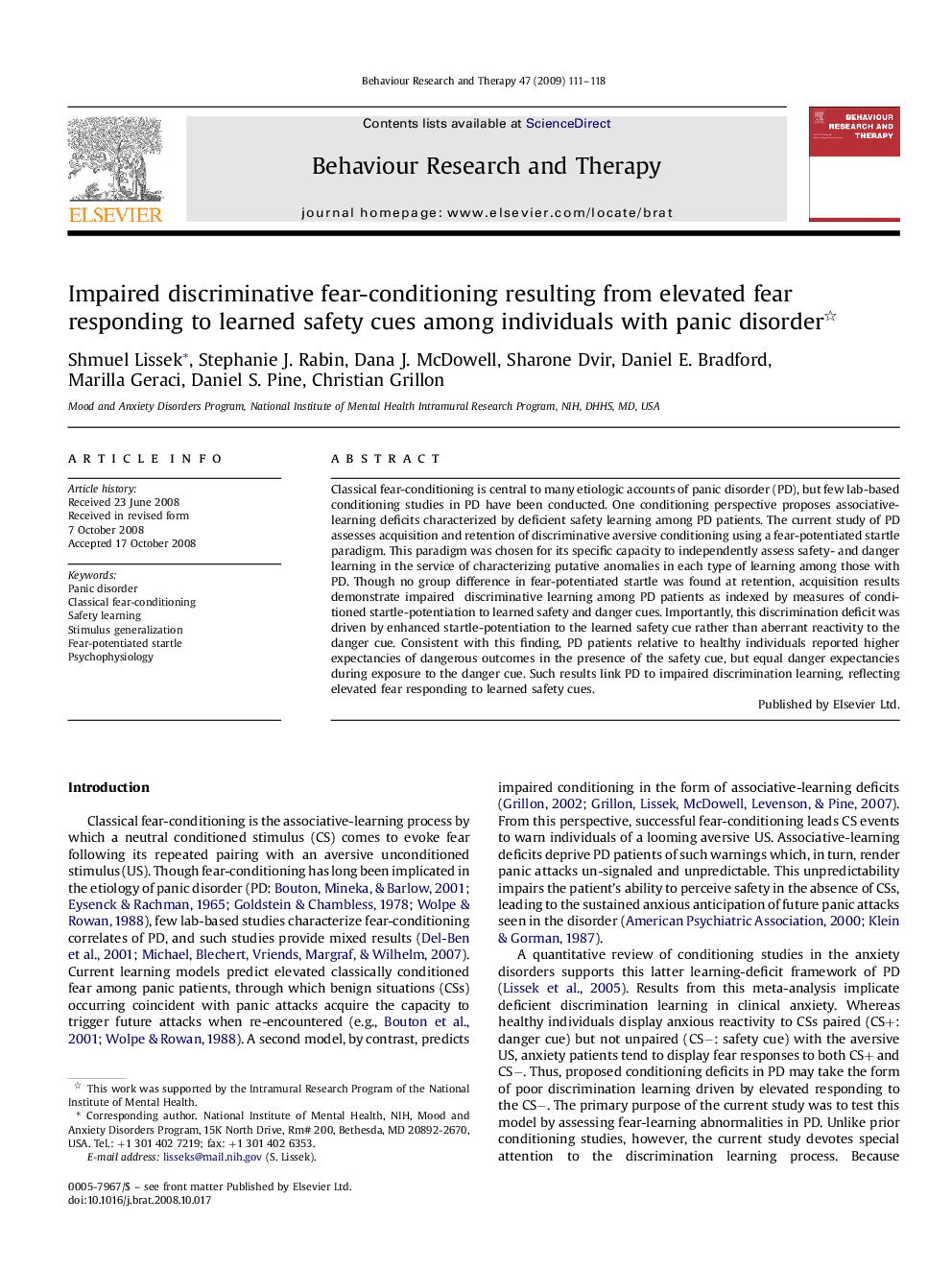| Article ID | Journal | Published Year | Pages | File Type |
|---|---|---|---|---|
| 902220 | Behaviour Research and Therapy | 2009 | 8 Pages |
Classical fear-conditioning is central to many etiologic accounts of panic disorder (PD), but few lab-based conditioning studies in PD have been conducted. One conditioning perspective proposes associative-learning deficits characterized by deficient safety learning among PD patients. The current study of PD assesses acquisition and retention of discriminative aversive conditioning using a fear-potentiated startle paradigm. This paradigm was chosen for its specific capacity to independently assess safety- and danger learning in the service of characterizing putative anomalies in each type of learning among those with PD. Though no group difference in fear-potentiated startle was found at retention, acquisition results demonstrate impaired discriminative learning among PD patients as indexed by measures of conditioned startle-potentiation to learned safety and danger cues. Importantly, this discrimination deficit was driven by enhanced startle-potentiation to the learned safety cue rather than aberrant reactivity to the danger cue. Consistent with this finding, PD patients relative to healthy individuals reported higher expectancies of dangerous outcomes in the presence of the safety cue, but equal danger expectancies during exposure to the danger cue. Such results link PD to impaired discrimination learning, reflecting elevated fear responding to learned safety cues.
